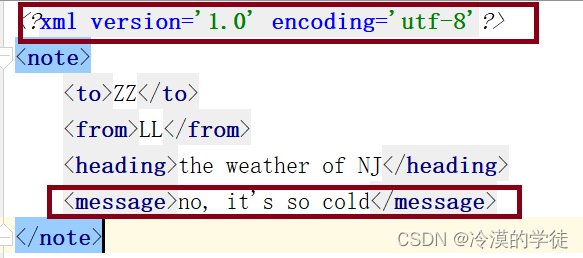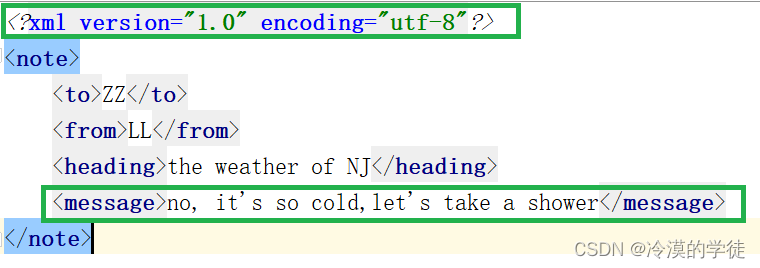Python往事:ElementTree的单引号之谜
最近在针对某款设备的界面xml进行更新过程中,被告知回稿的字串放在了一个excel文件中,而我要上传到服务器的界面用语是用xml文件封装的。再经过详细求证了翻译组提供excel文件的原因后,我决定用python来完成界面用语xml的更新,但是在使用ElementTree库的时候,却发现这个库有点小瑕疵。就是会将xml文件的表头<xml/>这段中的双引号换成了单引号,虽然单双引号在解析xml上没有影响。但是如果上提交代码时有强校验的门禁处理等规则的话,就需要额外解释了。为此针对这个问题,查看了下源码并分享一种修改方案。
我遇到的情况如下图所示,原本要替换message的信息,结果执行完替换脚本后,发现xml声明表头也被替换了。这个变更在比较软件中会显得很明显。


发生这种事情的原因在于EelementTree#write()中将表头的格式默认写成了单引号。如下源码展示了write()的实现,可以发现在_get_wirte()的with循环体中直白的执行了一句写入操作:
<?xml version='1.0' encoding='%s'?>
def write(self, file_or_filename,
encoding=None,
xml_declaration=None,
default_namespace=None,
method=None, *,
short_empty_elements=True):
"""Write element tree to a file as XML.
Arguments:
*file_or_filename* -- file name or a file object opened for writing
*encoding* -- the output encoding (default: US-ASCII)
*xml_declaration* -- bool indicating if an XML declaration should be
added to the output. If None, an XML declaration
is added if encoding IS NOT either of:
US-ASCII, UTF-8, or Unicode
*default_namespace* -- sets the default XML namespace (for "xmlns")
*method* -- either "xml" (default), "html, "text", or "c14n"
*short_empty_elements* -- controls the formatting of elements
that contain no content. If True (default)
they are emitted as a single self-closed
tag, otherwise they are emitted as a pair
of start/end tags
"""
if not method:
method = "xml"
elif method not in _serialize:
raise ValueError("unknown method %r" % method)
if not encoding:
if method == "c14n":
encoding = "utf-8"
else:
encoding = "us-ascii"
enc_lower = encoding.lower()
with _get_writer(file_or_filename, enc_lower) as write:
if method == "xml" and (xml_declaration or
(xml_declaration is None and
enc_lower not in ("utf-8", "us-ascii", "unicode"))):
declared_encoding = encoding
if enc_lower == "unicode":
# Retrieve the default encoding for the xml declaration
import locale
declared_encoding = locale.getpreferredencoding()
write("<?xml version='1.0' encoding='%s'?>\n" % (
declared_encoding,))
if method == "text":
_serialize_text(write, self._root)
else:
qnames, namespaces = _namespaces(self._root, default_namespace)
serialize = _serialize[method]
serialize(write, self._root, qnames, namespaces,
short_empty_elements=short_empty_elements)
可能这是ElementTree在设计初为了方便在双引号中引用字串才将version和encoding改为用单引号展示。因为write()中没有复杂的间接依赖,可以直接将该方法复制到自己的工程里。为此,针对该处的修改就是重写ElementTree#write()。重新方案如下,先将源代码中的<?xml version='1.0' encoding='%s'?> 替换成 <?xml version=\"1.0\"?encoding=\"%s\"?>。
同时针对提示引用缺失的方法,增加ElementTree前缀来指明调用路径。这样就可以保证整个write()也可以在自己的工程中被执行。修改后的代码如下:
def fix_write(self, file_or_filename,
encoding=None,
xml_declaration=None,
default_namespace=None,
method=None, *,
short_empty_elements=True):
if not method:
method = "xml"
elif method not in ElementTree._serialize:
raise ValueError("unknown method %r" % method)
if not encoding:
if method == "c14n":
encoding = "utf-8"
else:
encoding = "us-ascii"
enc_lower = encoding.lower()
with ElementTree._get_writer(file_or_filename, enc_lower) as write:
if method == "xml" and (xml_declaration or
(xml_declaration is None and
enc_lower not in ("utf-8", "us-ascii", "unicode"))):
declared_encoding = encoding
if enc_lower == "unicode":
# Retrieve the default encoding for the xml declaration
import locale
declared_encoding = locale.getpreferredencoding()
write("<?xml version=\"1.0\" encoding=\"%s\"?>\n" % (
declared_encoding,))
if method == "text":
ElementTree._serialize_text(write, self._root)
else:
qnames, namespaces = ElementTree._namespaces(self._root, default_namespace)
serialize = ElementTree._serialize[method]
serialize(write, self._root, qnames, namespaces,
short_empty_elements=short_empty_elements)
修改后,将原来调用ElementTree#write()的地方改成使用fix_write即可,同时不要忘了,将当前工程的elementTree对象作为第一入参穿进去。修改后的运行结果就会发现没有额外的格式变更了。
def update_fix():
tree = ET.parse('element_test.xml')
root = tree.getroot()
messages = root.findall('message')
messages[0].text = "no, it's so cold,let's take a shower"
fix_write(tree, 'element_test_update_fix.xml', encoding="utf-8", xml_declaration=True)
本文来自互联网用户投稿,该文观点仅代表作者本人,不代表本站立场。本站仅提供信息存储空间服务,不拥有所有权,不承担相关法律责任。 如若内容造成侵权/违法违规/事实不符,请联系我的编程经验分享网邮箱:veading@qq.com进行投诉反馈,一经查实,立即删除!